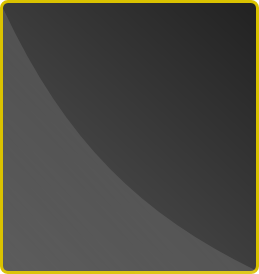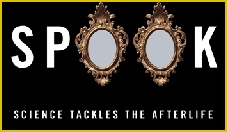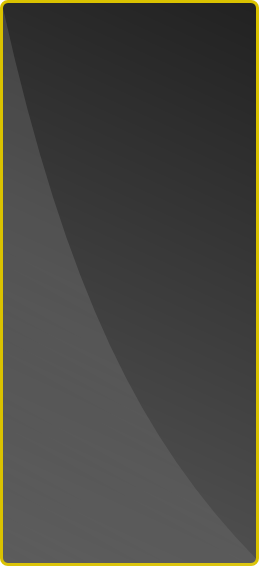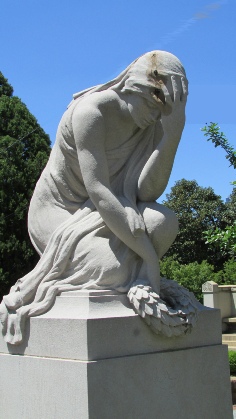












Last Gasps
Paranormal



The South’s science-based team!
Our trained investigators are here to believe you. Most importantly, we are here to solve the problem...no matter what it takes. Our services are always FREE.

© 2023 Last Gasps paranormal. Links | Terms and Conditions







Ghost 101


Ghost 101 is a basic introduction into the world of paranormal investigation. This text was developed as part of the introductory class for members of the Last GASPS.
Presented by Kyle T. Cobb, Jr.
Nos tibi credere.
A Literary History
Ghost 101
Before beginning an exploration of the world of the paranormal, it is important to set several agreed upon definitions. This is true because to a savage, even a television is magic.
Definitions
Definition of “supernatural”
Dictionary.com, 2010
su·per·nat·u·ral / supər nætʃərəl, - nætʃrəl/ Show Spelled[soo-per-nach-er-uhl, -nach-ruhl]
–adjective
of, pertaining to, or being above or beyond what is natural; unexplainable by natural law or phenomena; abnormal.
of, pertaining to, characteristic of, or attributed to god or a deity.
of a superlative degree; preternatural: a missile of supernatural speed.
of, pertaining to, or attributed to ghosts, goblins, or other unearthly beings; eerie; occult.
Definition of “paranormal”
Merriam-Webster's Medical Dictionary, © 2007 para·nor·mal definition
Pronunciation: / par-ə- nȯr-məl/ Function: adj
: not understandable in terms of known scientific laws and phenomena
Random House Dictionary, 2010.
par·a·nor·mal / pærə nɔrməl/ Show Spelled[par- uh-nawr-muhl] Show IPA
–adjective
of or pertaining to the claimed occurrence of an event or perception without scientific explanation, as psychokinesis, extrasensory perception, or other purportedly supernatural phenomena.
Definition of “paranormal”
The Skeptic's Dictionary, 2009 paranormal
An event or perception is said to be paranormal if it involves forces or agencies that are beyond scientific explanation. Many paranormal events are said to be experienced only by those with psychic powers, such as extrasensory perception or psychokinesis. Some events are perceived as paranormal due to ignorance or magical thinking.
All of the preceding definitions present a problem. The definitions of the words “supernatural” and “paranormal” suggests that they are outside of science.. Fundamentally, this assert is simply not possible. For the laws of science to be true, they must be universally applicable. While there may be areas that science is working to better understand, the exclusion of the paranormal from this framework can only serve to decrease the value of serious research into currently unexplained events.
Based on our rejection of this assumption that paranormal is outside the rules of modern science, it is the duty of an investigator to attempt to use their research to expand the science of paranormal through rational and methodical scientific investigation. Like sociologist and psychologists in the recent past, the exact methods of investigation still lack definition and the subjects seem less than cooperative.
And strictly speaking, from a skeptics perspective, the entire thing make be a colossal waste of time, movie and energy.
The Science…
It would be fun to ignore the science elements but science is what gives research credibility.
What is Scientific Methodology?
1. Ask a Question
2. Do background Research
3. Construct a Hypothesis
4. Test your Hypothesis by Doing an Experiment
5. Analyze your Data and Draw a Conclusion
6. Communicate your Results
Ask a Question
How we form the question impacts the validity of our answers?
Avoid Informal Fallacy.
Design questions that can be answered.
For example the basic questions for paranormal research could be:
Is there really phenomena occurring that is beyond the ability of explanations to modern science?
If the above is true, can we gather credible, tangible evidence of it using scientific methods
The background research
One of the problems when paranormal goes through the cycle of pop culture acceptance is the infusion of hundred of books written to make a quick buck on the phenomena. As any given moment, there are always 5 or 6 of these books languishing in the purgatory of the bookstore bargain shelves.
Most of the books published claim to be ghost stories and not investigation results. And honestly that is really what the general public wants. Very few care what the visible spectrum of the human eye is or how mass impacts the amount of energy a spirit would need to move a ball.
People want to be scared. They want to hear the ghost stories from around the campfire. They want the blood coming down the walls. They want the familiar Raggedy Ann doll to turn and watch someone walking out the door.
Unfortunately, that is not the reality of paranormal investigations.
Of the few books dealing with investigations, there are two types:
- Psychic investigations (90%)
- Scientific (5%)


Skeptical Inquirer is a wonderful source of objects critiques on various paranormal topics.



A wonderful unbiased book by Mary Roach that takes a fascinating journey through the world of the paranormal.







Even the “Scientific” books tend to be written like a high school student is reading them and contain virtually no useable information.
Ironically , one of the best sources of instruction in how to do (or not do) paranormal investigations comes from the harshest critics, the skeptics. No one spends as much time analyzing methods and results as someone trying to disprove them. Magazine such as the Skeptical Inquirer and Skeptic Magazine are a treasure trove of valuable information.
Skeptical Inquirer is a personal favorite. Not only are the articles well researched, but they are well written. While this kind of alliance may seem odd, if the ultimate goal of a paranormal researcher is to learn the truth, the objectivity is an essential ingredient.
Before passing by the written word, one book of note is SPOOK by science writer Mary Roach. . Where Roach’s prior book STIFF is a fascinating look at death and the use of dead bodies, SPOOK is an unbiased look at the paranormal. Covering everything from Mediums to poltergeist to things that go bump in the night, Roach takes the reader through a journey of discovery. This book is well worth the read.
Television and Movies
Relying on television shows for an education in paranormal is much like expecting to watch a television show and then being able to construct a jet airplane. Simply stated, TV shows are designed as entertainment for the average American. In fully grasping that concept, it is import to understand they are expect to appeal to people that have most likely counted high school as their highest level of education and that find shows like American Idol and New Jersey Shores entertaining.
Shows like Ghosthunters have done a lot to encourage the latest round of paranormal interest but they are simply the latest. Consider that Twilight Zone, the Peter Blatty book “The Exorcists,” “Ghostbusters,” and Buffy the Vampire Slayer had much the same impact in their times.
The hypothesis
To begin any scientific endeavor, it is essential to clearly define and state the problem that the experiment is designed to investigate.
For example a possible hypothesis used by paranormal investigators could be:
Using detection equipment slightly above and below the human range, that investigators can obtain evidence related to reports of paranormal activity at a location.
The experiment
Like sociologist investigating less developed tribes in the wilds of South America, paranormal investigators attempt to do their research in field conditions. This often means carrying equipment and investigators in completely uncontrolled (and uncontrollable) locations. Investigations constantly run the risk of being contaminated by outside factors as well as careless investigators.
It is the responsibility of every investigator to assume that an unexplained event has a simple, common non-paranormal answer. Because the existence of paranormal existence is still unproven, the burden of proof remain against an unexplained event.
Because in modern society encountering ghosts, demons, and poltergeist is not a routine experience, one assumption is that detection of paranormal entities becomes easier when augmented by technology. As a result, many investigations arm themselves with cameras that see beyond the human spectrum or audio records that hear outside the human range.
When selecting equipment, an investigator must always bear in mind that the goal is to:
use our equipment to obtain permanent, unalterable records of evidence from the investigation location.
Analysis and Conclusion
The hardest part of any investigation is reviewing the hundreds of hours of acquired evidence. More than any other area of paranormal investigation, this area is done the greatest injustice by popular media where hundreds of hours of work become a 10 second montage.
In attempting to “obtain permanent, unalterable records” most investigations presently utilize digital audio records as well as a variety of digital video devices.
In setting up the equipment, all the various devices need to be time synchronized to allow cross comparison of evidence. Every minute of audio has to be listened to attentively in quiet surrounding. Anomalies must be identified and cross checked against parallel devices. As will be discussed later, sound has a way of changing depending on distance and interference. Video has to be review in real time to catch any minor shifts that could indicate a possible detection.
So if considering a relatively small investigation that is utilizing 11 video feeds and 10 audio recorders, for every hour of active investigation there will be 21 hours of evidence to review. As a result, a typical 12 hour investigation will generate at 252 hours of evidence that needs to be carefully reviewed.
Communication
The final great burden is the communication and review of the evidence for peer review.
In many ways this is the single greatest failure of the paranormal community as a whole. There is presently no uniformed, standardized methodology for various groups to share their investigation evidence. Many investigative teams attempt to share information using popular internet outlets such as Facebook. Unfortunately, the various social media outlets use compression methods which can alter the digital formats of the various files and can generate previously not present anomalies or corruption of the evidence.
Presently, only a few investigative groups upload the raw evidence for peer review on their website. This is often a time and storage space consideration.

| Paranormal Books |
| Apparitions |
| Cryptids |
| Demons |
| Orbs |
| Poltergiest |
| Residual Hauntings |
| Shadow People |
| West Demons |
| Ouija and Zozo |
| Exorcisms |
| Anneliese Michel |
| Ronald Hunkeler |
| Anna Ecklund |
| LaToya Ammons |
| George Lukins |
| Christian Demon texts |
| Roman Rite 1614 |
| Roman Rite 1998 |
| Eastern Demons |
| FAQ |